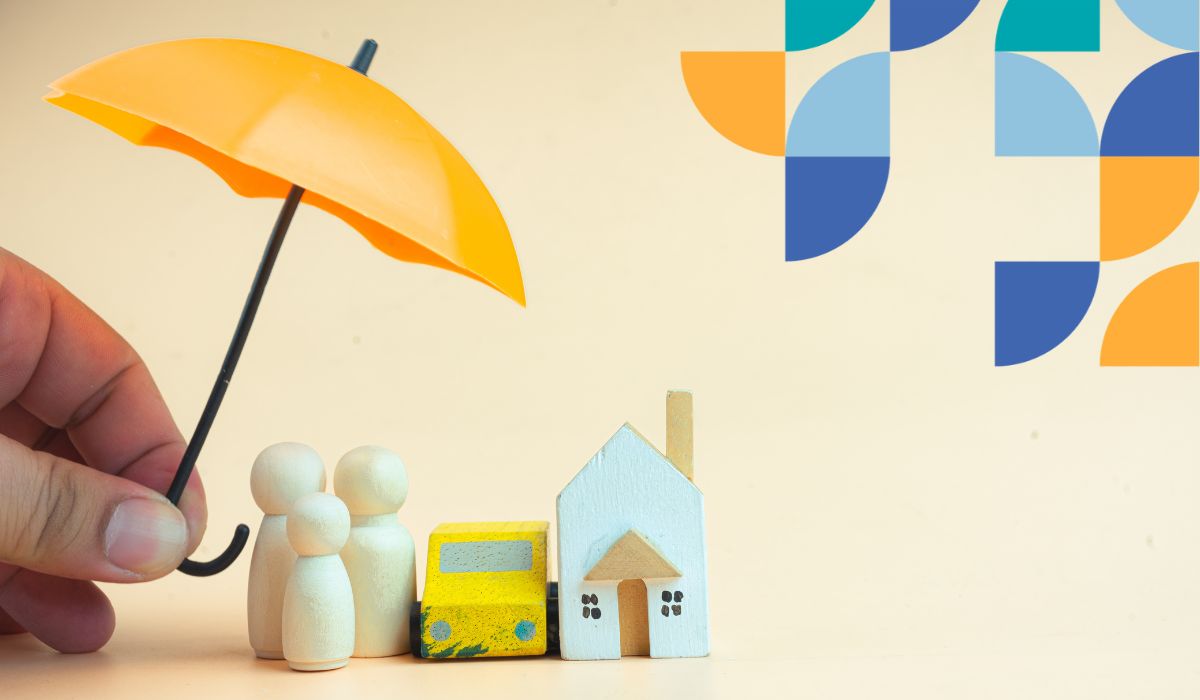How Does Climate Change Impact Your Insurance Coverage?

In 2023, the United States saw 25 extreme weather events including winter storms, tropical cyclones, drought, wildfire, and flooding. And that’s not accounting for the secondary effects like power outages, transportation delays, and impacted disaster response programs.
It can be challenging to plan for the potential effects of climate change when you’re already managing a tight budget. But it’s important to take action where you can to prepare for climate change.
Why? Because SaverLife discovered that severe weather changes are already impacting our members’ financial health on a daily basis. (Learn more about the ripple effects of climate change here.) In fact, 53% of SaverLife members are worried about a severe weather event or disaster where they live.
One way that you can prepare for climate change is by making sure you have the right insurance coverage for your lifestyle. Read on to learn how the climate could affect your insurance costs, coverage, and claims, and how you can take action now.
Why Is It Important We Talk about Climate Change and Insurance Together?
Whether you have a roof leak or experience a car accident, insurance is a way to help protect yourself from the financial impacts of these risks. Typically how insurance works is they collect a monthly or annual fee, known as a premium. This premium ensures that, in the event of a loss, your insurance provider will pay to help you cover that loss.
If climate change impacts you, your home, or your car, it’s important to know if your insurance will cover these expenses. Especially since some insurance companies offer auxiliary plans related to severe weather that can increase your overall premium.
For example, SaverLife member José lives in a flood zone. He would like to insure his home just in case his house is damaged by flooding, but his insurance provider will only cover this risk if he purchases additional coverage. However, because José maintains a strict budget, he cannot afford to pay for the extra coverage at this time.
“I hope and pray that, if my home is damaged by flooding, it’s covered,” he describes. “But right now, I’ve got enough on my mind. I can’t think about what’s going to happen to my home; I’m just trying to deal with today.”
José can name a variety of incentives and programs that help homeowners like him prepare for climate change. But when it comes to actually taking advantage of these initiatives, he’s priced out. Read his full story.
Understanding Your Policies
Insurance is an important piece of your risk management strategy for climate change. Learn more about your insurance coverage and how it might work in the event of extreme weather or climate incidents below.
Car Insurance
There are three types of primary types of coverage you can get for your car: liability, comprehensive, and collision coverage.
Liability coverage covers damage to other cars and property as well as personal injuries of the other driver if you’re in an accident and at fault. Typically, these policies don’t cover damage done to your car.
Collision coverage pays the cost of repairing or replacing your vehicle if it’s damaged in an accident, regardless of who is at fault. This includes collisions with another vehicle or an object, like a tree.
Liability and collision coverage DO NOT cover damage from an extreme weather event.
To be sure your car is covered in the event of a flood, storm, wildfire, or other weather event, you’ll need comprehensive coverage. This is because comprehensive coverage insures your car against events that are outside of your control.
Considerations:
- Most states require liability, but none require collision or comprehensive coverage.
- Switching to comprehensive coverage could increase your insurance costs.
To determine what type of coverage you have or adjust your coverage, review your policy or speak with your insurance agent.
Homeowners Insurance
Often, your home is the largest asset you own. So, protecting it is incredibly important. The most common homeowner coverage is an HO-3 Policy, or a Special Form Policy. This policy will protect your home from damage from some extreme weather events, including lightning strikes, hail, wind, and wildfires. It will also protect the contents of your home from disasters named in the policy.
However, homeowners insurance typically doesn’t cover flood or earthquake damage.
If you live in an area along a fault line, or one prone to flooding, you can add earthquake or flood protection to your homeowners insurance either as an endorsement or as a separate policy.
If you’re concerned about your coverage in these areas, speak with an insurance agent to see what you need to do. It’s important to know that both flood and earthquake insurance can be expensive.
- For additional information on flood insurance and possible discounts available, visit https://www.floodsmart.gov/.
- For additional information on earthquake insurance, visit https://www.fema.gov/emergency-managers/risk-management/earthquake/insurance.
Renters Insurance
If you rent, you may be curious about the best way to protect your property from extreme weather events. Unlike homeowners insurance, renters insurance doesn’t cover the building you live in. Instead, it typically covers damages caused by fire, hail, wind, rain, lightning, tornados, snow, and ice. Make sure to check your policy to see exactly what it covers.
Like homeowners insurance, you can obtain specific coverage for damage to your property from earthquakes or floods. However, these policies can be cost prohibitive for renters. Your landlord’s policy should cover the structure and property itself.
Coverage Costs
The cost of insurance coverage for extreme weather events is an important factor, especially for those who don’t have much wiggle room in their budgets.
If you don’t have room in your budget to purchase additional or better coverage to help protect you from climate change and extreme weather events, consider the cost of doing nothing and experiencing the impacts of severe weather versus paying upfront for insurance policies: in many cases, some coverage is better than none.
You can also get the coverage you need at a more affordable rate by paying more upfront. What this looks like is increasing the deductible on your homeowners, renters, or car insurance. The deductible is the amount you’re responsible for paying before your insurance coverage kicks in. By increasing your deductible, you pay a larger up-front cost if you need to file a claim, but results in more manageable premium expenses.
To find assistance programs for flood and earthquake insurance, look for potential discounts provided by the state you live in and by the federal government.
What to Do While Waiting for Claims
While it’s good to be prepared, it’s also important to understand what to do after an incident. According to the legal encyclopedia Nolo, insurance policies often require you to take reasonable steps to secure your property and protect it from further damage. Be sure that these steps don’t put you in harm’s way.
Then take photographs of the damage for your insurance company. It’s also important to file a claim for the damages as quickly as you can.
While waiting for a claim to come through, or if facing claim delays, you’ll need money to cover the cost of necessities like groceries, rent, utilities, phone bills, or child care expenses. This is where an emergency fund can give you peace of mind and help you make ends meet. Start setting aside money for emergencies each month, even if it’s only a small amount.
Lastly, if you have small personal items that were lost or damaged, and you need to replace them right away, you may be able to request an advance on your claim to cover these items. Be sure to hold onto your receipts, but try to keep your purchases basic. If you buy expensive replacements for basic items, you might end up paying the difference between what the insurance company agrees to pay and the cost of the items that you selected.
When it comes to climate change, small steps make a big difference
Climate change may already be impacting how we think about and plan for our financial futures. But this doesn’t mean that we can’t take small steps now to prepare for severe weather while still taking steps toward our financial health goals.
Insurance is one of the best things you do to prepare for extreme weather. To be sure that you’re ready for any situation:
- Take time now to understand your policies
- Be clear on what’s covered and what you need to do when filing a claim
- Take inventory of your belongings so you know exactly what to report in the case of damage
- Review the costs related to your coverage, and make sure that it meets your budgeting needs while still accounting for severe weather events
- Set money aside that you can rely on in the case of extreme weather
And the last thing to remember: you’re not going through this alone. The SaverLife community is actively working to better understand and prepare for the effects of climate change. If you have recently updated your insurance coverage to account for climate change, or you have direct experiences with severe weather, we’d love to hear from you.
Kimbree Redburn is an Accredited Financial Counselor® with a background in economic development. She works with her clients to help them understand their financial options and make money decisions with confidence. She believes that financial education gives people a chance to build a better life.

